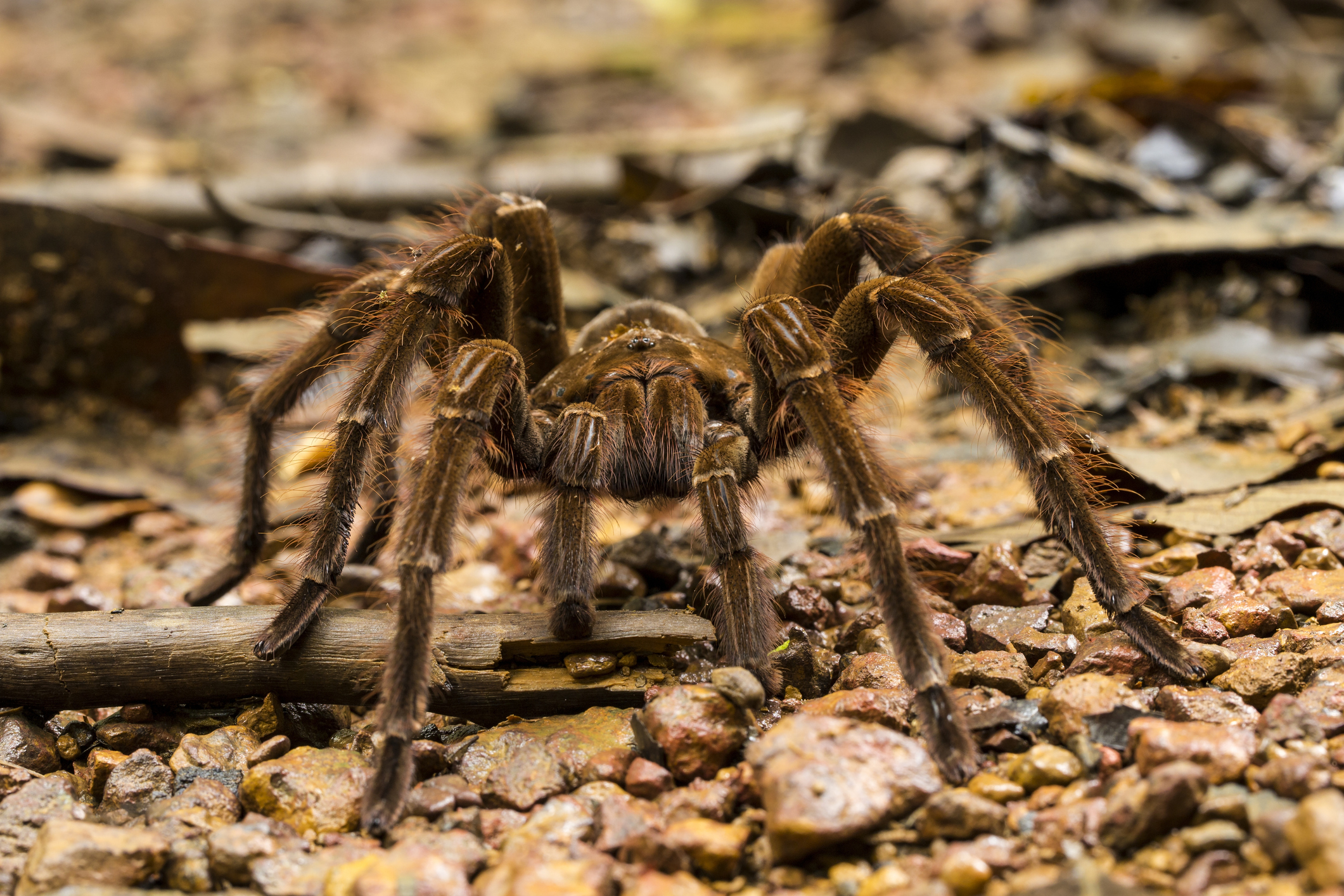
Deep in the heart of South America’s dense rainforests lurks a creature straight out of a horror movie: the goliath bird-eating tarantula. As the world’s largest spider by mass, it dominates its habitat with powerful legs, venomous fangs and a surprising arsenal of defence mechanisms.
But how much of what you’ve heard about this spider is fact, and how much is fiction? Let’s dive into the world of the goliath bird-eating tarantula!
What is a goliath bird-eating tarantula?
The goliath bird-eating tarantula (Theraphosa blondi), sometimes called a goliath birdeater, is a giant among arachnids. As the largest spider by mass and body length, this eight-legged goliath commands attention with its sheer size and impressive predatory skills. Despite its name, it rarely preys on birds, but that doesn’t make it any less fearsome!
Native to the rainforests of South America, this tarantula is a nocturnal hunter, using stealth and patience to ambush prey. From insects to small vertebrates, few creatures are safe from its powerful fangs and venomous bite.
What does a goliath bird-eating tarantula look like?
If you stumbled across a goliath bird-eating tarantula, you’re unlikely to forget it in a hurry. For starters, it’s absolutely ginormous, with a leg span of up to 30cm. Just imagine a long ruler! Its huge size means it can weigh up to 175 grams, making it the world’s largest spider.
Its brown exoskeleton is covered in dense hair, which helps it sense vibrations in its surroundings, from prey to predators.
The scariest thing about goliath birdeaters? Their terrifying 2.5cm fangs which make light work of skin and the exoskeletons of insects and other arachnids.
5 fascinating facts about goliath bird-eating tarantulas
Now that we know a little bit about goliath birdeaters, let’s take a deeper dive into some fascinating facts about these wonderful creatures.
Where does their name come from?
Despite its dramatic title, the goliath bird-eating tarantula rarely eats birds. The name originates from an 18th-century account of one feasting on a hummingbird, though its usual diet consists of insects, rodents, frogs and even small snakes.
Where do they live?
These massive spiders are found in the dense rainforests of northern South America, including Venezuela, Brazil, Guyana and Suriname. They prefer humid, swampy areas where they can dig burrows for shelter, so you needn’t worry about bumping into one on your way to the supermarket!
Goliath birdeaters are stealthy hunters
The goliath bird-eater is a patient hunter, remaining hidden in burrows by day and emerging at night to ambush unsuspecting prey. It relies on vibrations rather than eyesight to detect movement and has cat-like reactions to catch prey unaware.
How do they defend themselves?
If threatened, this tarantula rubs its hind legs against its body to flick irritating hairs that can cause severe discomfort to predators’ eyes and skin. It can also produce a loud hissing sound, audible from up to 15 feet away, by rubbing specialised bristles on its legs together. As a last resort, it rears up on its back legs, baring its massive fangs, which would definitely give anyone a fright.
Not endangered
Unlike many rainforest species, the Goliath bird-eating tarantula is not currently endangered. However, habitat destruction and the pet trade pose potential threats to wild populations.
See the goliath bird-eating tarantula at Blue Planet Aquarium
Want to witness this incredible arachnid up close? Visit the Venom Exhibit at Blue Planet Aquarium, where you can observe the goliath bird-eating tarantula in action.
Bonus points to whoever can spot it hiding in its nest first!
Type
Arachnid
What do they eat?
Large insects, frogs, rodents, lizards, small birds
Size
Up to 28cm leg span
Water Type
Warm climates
Where are we?
Amazon Rainforest
